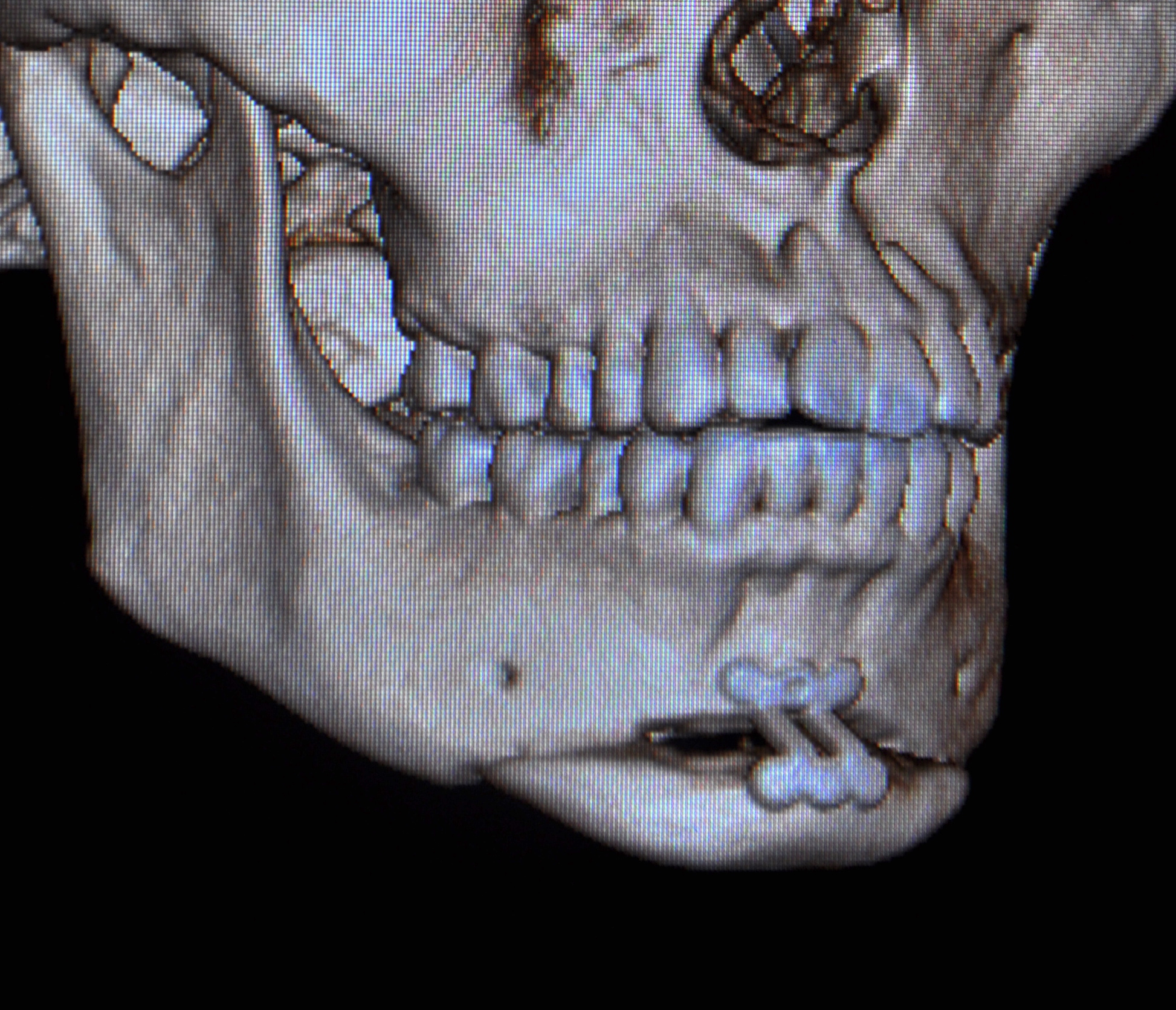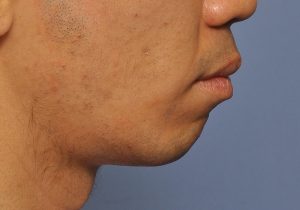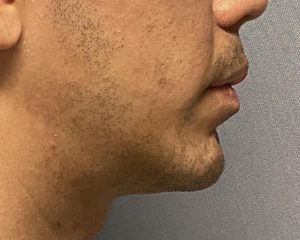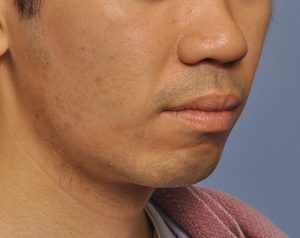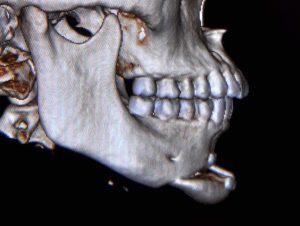Background: The sliding genioplasty is usually the treatment of choice for many significantly short chin patients. A a general rule when the amount of horizontal chin projection is near 10mm or more, the sliding genioplasty provides a more effective augmentation with a much lower risk of infection. For women in particular who prefer to keep or acquire a narrow chin width, moving the chin bone forward most assuredly makes that happen. (most chin implants will make the chin wider)
But the sliding genioplasty operation is not perfect. It has its own unique aesthetic liabilities of which the most well known is the potential for bony steps along the inferior border at the back end of the bone cuts. The other known but not completely understood aesthetic liability is the potential for deepening of the labiomental sulcus or fold. As the chin bone moves forward, which is below the attachment of the mentalis muscle which contributes to making the fold, by definition the fold will appear deeper. This also occurs with chin implants but uniquely may be exaggerated by the movement of the chin bone.
The deepening effect of the labiomental sulcus is affected by numerous factors including the amount of chin bone advancement. The greater forward the chin bone is moved the deeper the labiomental fold may become due to the bony step off left in its wake. Another contributing factor and predictor of the fate of the labiomental fold is its preoperative shape. Labiomental fold shapes can be subtle in depth and often are when the chin is recessed. But the contour of its shape is even more important. Flat or shallow concave shapes will not usually change significantly. Folds that have a skin crease or indent will be affected the most by larger sliding genioplasty movements.
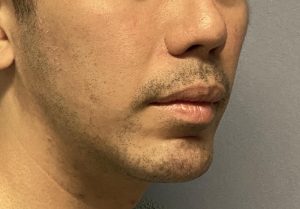
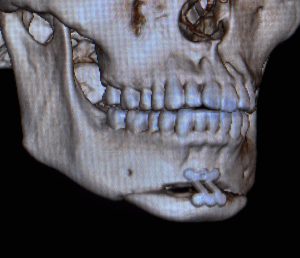
An inverted skin crease in the labiomental fold indicates stronger attachments to the subcutaneous tissue and/or less soft tissue thickness. Thus it can be predicted that the fold area will become more angulated in shape (sharply deeper) with larger amounts of chin bone forward movements. Thus one strategy to lessen this effect, if it is of a preoperative aesthetic concern to the patient, is to accept the tradeoff of a lesser amount of forward chin bone movement.
Case Highlights:
1) The depth of the labiomental fold can influence how much chin augmentation is done in a sliding genioplasty.
2) The labiomental fold is a fixed anatomic area of the upper chin whose position does not regardless of the amount of chin projection added beneath it.
3) The sliding genioplasty can uniquely make the labiomental fold deeper due to the new step off created in the bony chin which occurs right below the attachment of the mentalis muscle.
Dr. Barry Eppley
Indianapolis, Indiana

